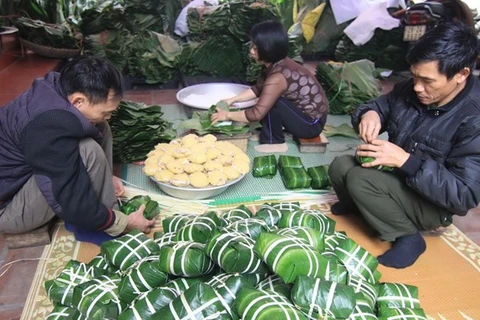Hanoi (VNA) - An exhibition featuring the weaving craft of the Co Tu ethnic minority people in the central province of Quang Nam will be held in Hanoi on August 1 and 2.
The exhibition will also introduce the special cultural practices of the group as well as their weaving products past and present.
Visitors will have the chance to hear stories told by Co Tu weaving artisans and read a book introducing the group’s craft.
Products to be displayed include a “xa lech”, a three-compartment back basket Co Tu men use and a pinnacle of the rattan weaving art, a “p’reng”, a small back basket with unique patterns for Co Tu children to use at festivals, and a “p’rom”, a back basket for Co Tu women to bring gifts to their parents or to use in certain dances.
According to organisers, the exhibition is part of a project to improve the livelihoods of ethnic minority groups through the development of the rattan and herbal plant value chain and to preserve biodiversity in Quang Nam.
Launched first in September 2019, it has been implemented by the Truong Son Xanh Project with funding from the US Agency for International Development (USAID). The project covers mountainous districts in Quang Nam such as Dong Giang, Tay Giang, and Nam Giang, which are home to the Co Tu people.
Due to low demand for rattan products as well as a shortage of materials, the Co Tu people must depend on the forest for their livelihood, affecting biodiversity.
In this context, the Truong Son Xanh Project has coordinated with VietCraft to support 450 households in ten communes in the three districts to develop rattan raw material areas, expand training in rattan weaving, and develop markets, thus increasing local incomes.
So far, 150 hectares of rattan have been planted, while 250 households have received training./.

Traditional Tet food offerings to ancestors
During the Lunar New Year (Tet) festival, each ethnic group in Vietnam has its own culinary specialties that reflect the culture of their people and are used as offerings to worship their ancestors.






















